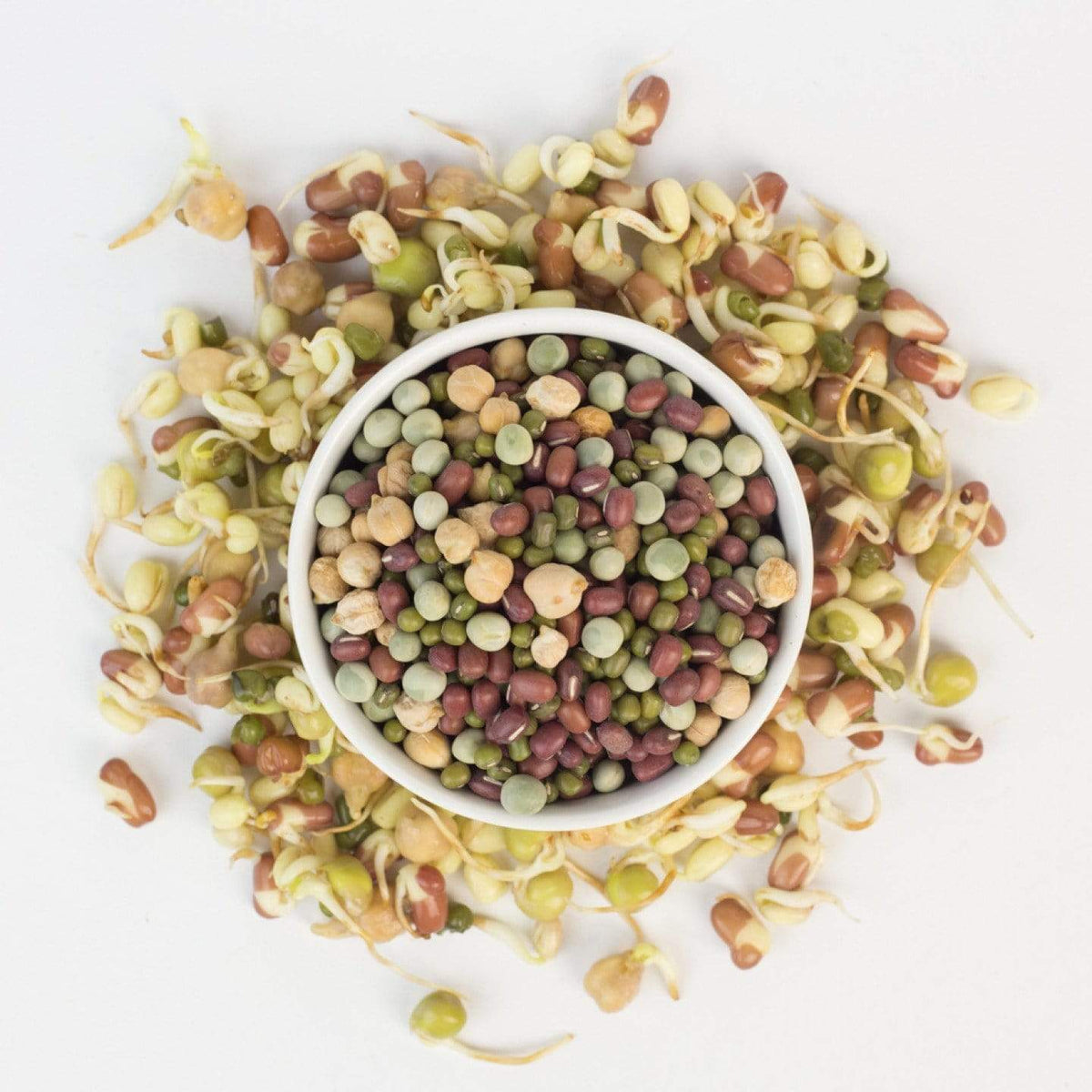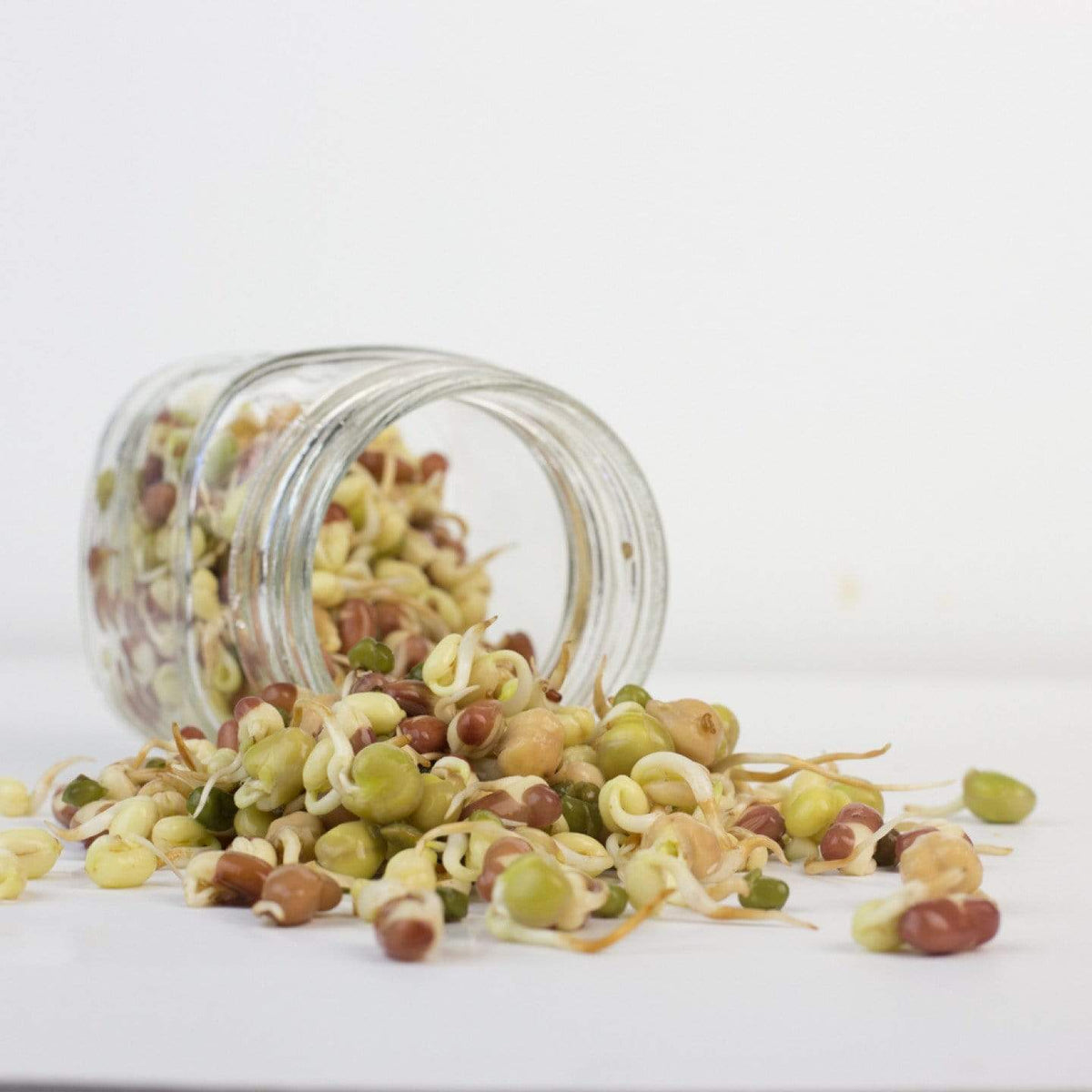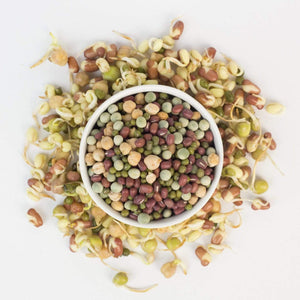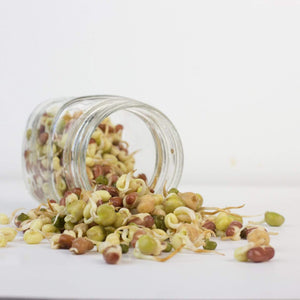
Black beans are well-known in southwestern and Cuban cuisine. They make delicious soups, side-dishes, salads, and chili.
Black beans do not sprout as reliably as some other beans. Because of their lower germination rate, black bean sprouts can be considered done even if only 50% of them have sprouted. Like other beans, ¼ inch of sprout is enough to get all the benefit.
PREPARING TO SPROUT BLACK BEANS
Before you get started sprouting black beans, keep in mind these sprouting tips:
- Large beans sprout better in cooler temperatures. Keep sprouting beans around 68-70°F, if possible.
- Large beans require a longer soaking period and more frequent rinsing and draining, especially in warmer temperatures.
- Large beans may not get enough air during draining. Make sure your sprouting container allows plenty of ventilation during draining periods.
- It is normal for the skins to loosen and come off the beans. Either pick the skins out or leave them in, they do not affect the flavor.
- Sprouted black beans require cooking before consuming.

HOW TO SPROUT BLACK BEANS
- Rinse ½-¾ cup black beans, remove any stones or other debris, and place in a quart-size sprouting jar or other sprouting container.
- Add 2-3 cups water, filling the jar three-quarters full, cover with a sprouting screen or mesh sprouting lid. Soak black beans at least 8 hours or overnight.
- Drain and rinse black beans thoroughly. Invert the jar over a bowl at an angle so that the beans will drain and still allow air to circulate.
- Repeat rinsing and draining 3-4 times per day until sprout tails appear. Taste sprouts (not beans) daily; discontinue rinsing and draining when sprouts have reached desired length and flavor.
- Drain for several hours before cooking or transferring to a covered container.
Organic Sprouting Seed Mix
Store sprouts in the refrigerator for up to 1 week.
Black beans and other large seeds also sprout well in a bag. Learn more in our article How to Sprout Seeds in a Sack.





















